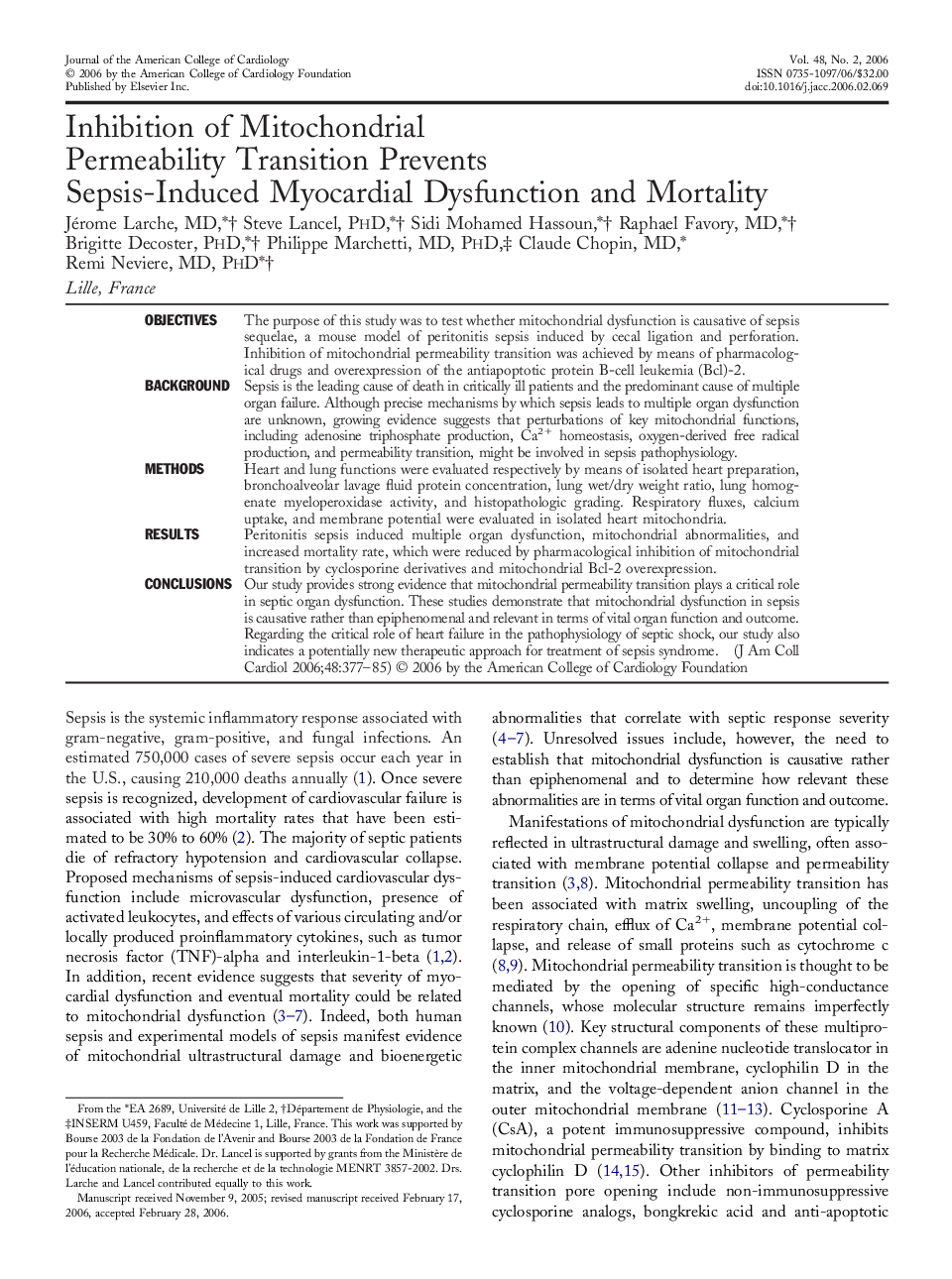| Article ID | Journal | Published Year | Pages | File Type |
|---|---|---|---|---|
| 2952049 | Journal of the American College of Cardiology | 2006 | 9 Pages |
ObjectivesThe purpose of this study was to test whether mitochondrial dysfunction is causative of sepsis sequelae, a mouse model of peritonitis sepsis induced by cecal ligation and perforation. Inhibition of mitochondrial permeability transition was achieved by means of pharmacological drugs and overexpression of the antiapoptotic protein B-cell leukemia (Bcl)-2.BackgroundSepsis is the leading cause of death in critically ill patients and the predominant cause of multiple organ failure. Although precise mechanisms by which sepsis leads to multiple organ dysfunction are unknown, growing evidence suggests that perturbations of key mitochondrial functions, including adenosine triphosphate production, Ca2+homeostasis, oxygen-derived free radical production, and permeability transition, might be involved in sepsis pathophysiology.MethodsHeart and lung functions were evaluated respectively by means of isolated heart preparation, bronchoalveolar lavage fluid protein concentration, lung wet/dry weight ratio, lung homogenate myeloperoxidase activity, and histopathologic grading. Respiratory fluxes, calcium uptake, and membrane potential were evaluated in isolated heart mitochondria.ResultsPeritonitis sepsis induced multiple organ dysfunction, mitochondrial abnormalities, and increased mortality rate, which were reduced by pharmacological inhibition of mitochondrial transition by cyclosporine derivatives and mitochondrial Bcl-2 overexpression.ConclusionsOur study provides strong evidence that mitochondrial permeability transition plays a critical role in septic organ dysfunction. These studies demonstrate that mitochondrial dysfunction in sepsis is causative rather than epiphenomenal and relevant in terms of vital organ function and outcome. Regarding the critical role of heart failure in the pathophysiology of septic shock, our study also indicates a potentially new therapeutic approach for treatment of sepsis syndrome.
